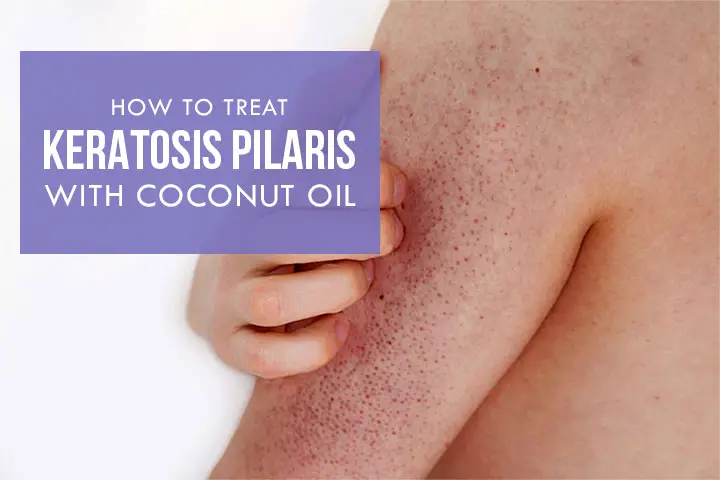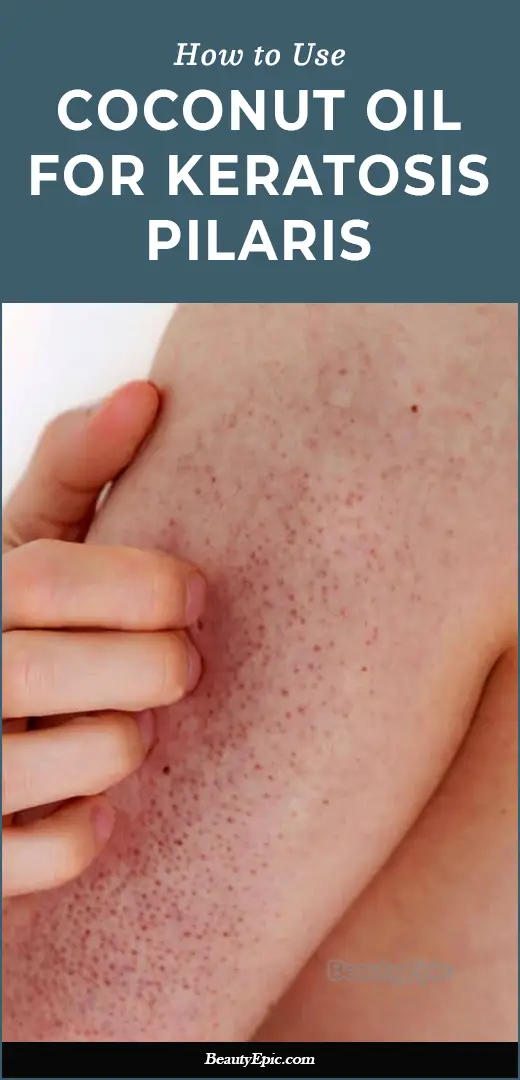
Important: This article is for informational purposes only. Please read our full disclaimer for more details.
Some of the diseases are not easily treated even after the consumption of several medicines. Keratosis pilaris is a disease caused by various infections on skin and this ailment leave marks on your skin that cannot be removed easily. It leaves red patches all over the skin. Keratosis pilaris treatment is quite expensive and the intensity of the disease decides how much the treatment would cost.
Coconut is the best keratosis pilaris treatment that lessens the strength of keratosis pilaris and easily cures it. Coconut oil is a great source of lauric acid that helps to eradicate the rough swelling on the skin as it can be absorbed by the hair follicles on the skin. The oil enriched with antibacterial and anti-inflammatory properties that reduce the effects of this disease.
Coconut oil is generally used on the skin and also works as a massage oil to promote hair growth and make your hair strong and healthy. Coconut oil is very safe to eat and is used to cook food in a number of countries.
Vital Elements in Coconut Oil
- Saturated Fat – It maintains moisture and hydration of the skin.
- Lauric Acid – It prevents bacteria and other microbes entering in your skin.
- Protein – It helps to repair dead tissue and cells.
- Vitamin E – It is a key ingredient in this oil that helps to repair your skin, provides healthy skin, smoothens your skin, helps avoid premature aging, treats wrinkles, and more.
[ Read: How to Use Tea Tree Oil For Scabies ]
Advantages of Using Coconut Oil for Keratosis Pilaris
Coconut oil is an excellent remedy for keratosis pilaris that prevents this disease and provides great benefits to your skin.
Cheap Yet Effective
- Coconut oil is very affordable as it comes at very cheap prices so; treating keratosis pilaris with coconut oils is quite inexpensive. A great technique to use coconut oil to treat keratosis pilaris just rub on that affected portion of skin before taking
- After you take a bath your skin pores are easily affected by the keratosis pilaris and those all pores unblocked that causes further infections. Use coconut oil that completely helps to moisturize those pores and prevents dirt from entering into your open pores.
- Add either homemade scrub or another scrub with coconut oil and use on the infected bumps gently.
- Coconut oil is greatly used to soothe your inflammation, lessen bruise of the bumps, moisturize as well as disinfect to the entire infected areas by keratosis pilaris.
Easiest Oil to Use for Scrubs
- It is quite simple to make scrubs for the skin and you need to add coconut oil with any coarse substance that can be used as a scrub.
- Gently rubbing a coconut oil based scrub on the affected area helps treat keratosis pilaris easily.
As we know that coconut oil is a natural ingredient that is used in cooking, medicinal properties, and healing keratosis pilaris. It poses no risks or side-effects when used to treat any skin or hair disease or condition.
Keratosis pilaris is very painful and unbearable disease that spreads onto your skin and you should take immediate action to treat this disease. Using coconut oil is the finest solution to get rid of the keratosis pilaris.
You Might Also Like:
- Coconut Oil Vs Petroleum Jelly: What’s the Difference?
- Homemade Coconut oil Face Mask: Benefits and Recipes
- How to Use Coconut Oil for Face: Benefits and Uses
- 12 Beauty Benefits of Coconut Milk for Skin and Hair
- Essential Oil For Keratosis Pilaris
- 50 Secret Ways to Use Coconut Oil for Health and Beauty
- How To Use Coconut Oil for Eyelashes?
- Does Coconut Oil Clog Pores On Your Skin?
- 7 Best Products For Lupus Skin
Image:- 1
















